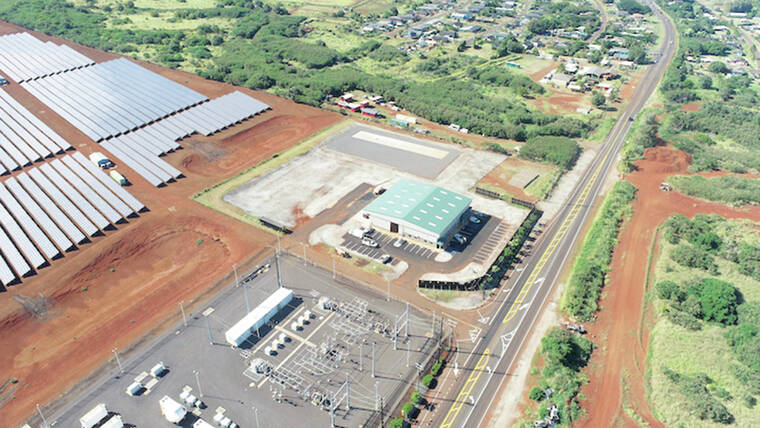LIHU‘E — The new Kaua‘i Island Utility Cooperative strategic plan commits to an ambitious target of 100 percent renewable energy by 2033.
This is 12 years ahead of the state mandate requiring utilities shift to 100 percent renewable power by 2045.
“Our strategic plan reflects a desire to continue our movement towards 100 percent renewable in an accelerated manner for both environmental and economic reasons,” said KIUC CEO David Bissell in a statement to The Garden Island. “Renewable energy is not always cheaper than fossil-fuel-sourced, however, renewables have had a stabilizing effect on KIUC’s rates, especially during the past 18 months of volatile oil pricing.”
KIUC currently produces about 70 percent of its energy through renewables, a combination of solar, hydro and biomass.
The specifics of how the organization will reach the goal will be ironed out in a plan to be developed by Dec. 2023.
The in-development West Kaua‘i Energy Project will be a large part of that effort.
The solar and hydro project, a partnership with the for-profit AES Corporation and scheduled for completion in late 2025, is projected to bring the island’s renewable generation to nearly 90 percent.
Struggles and
rate increases
The strategic plan reiterates KIUC’s plan to file a base rate increase with state Public Utilities Commission later this year. Bissell estimated in September the increase would be about 6 percent. While effective rates fluctuate month-to-month based on the cost of fuel and purchased power, the base rates have remained steady for the last 13 years.
“Our pending rate increase is not from our push for renewables,” Bissell said, “but rather from inflation, rising interest rates, environmental compliance costs and essentially flat sales in the 12 years since our last rate case.”
KIUC has kept effective rates below that of other islands as a result of their heavy reliance on renewables. While electricity rates have grown by 30-50 percent on other islands over the last 18 months amid supply chain issues, KIUC’s only increased about 10 percent.
The plan discusses some of the other difficulties facing the organization, including employee turnover and struggles with service on the North Shore.
“KIUC has traditionally experienced employee retention rates well above the national average, reducing the cost of turnover and stabilizing operations. Similar to other employers, COVID-19 and the associated economic downturn changed the landscape for KIUC on employee retention, particularly with early retirements being taken by long-term employees. Competing for employees is time-consuming and costly, creating new financial strain for KIUC,” the plan reads.
The plan further describes North Shore reliability as a challenge, due to limited transmission service along with remote and environmentally sensitive access. The plan anticipates significant infrastructure investments to improve North Shore reliability in the coming years.
KIUC is seeking public comments on the plan, which can be found on the KIUC website, kiuc.coop/strategicplan2023.
“We have worked hard on this plan,” said KIUC Board Member and Strategic Planning Committee Chair Jim Mayfield. “Being a member-owned cooperative, we are very interested in receiving public comments, and we would expect that changes to the plan may occur based on those comments.”
Comments are being accepted until Nov. 1.
•••
Guthrie Scrimgeour, reporter, can be reached at 808-647-0329 or gscrimgeour@thegardenisland.com.



I want to know why,with greater than 70% of our electricity coming from renewable sources, that Kauai residents pay three times the national average for electricity! I understand that the private companies that enter into these production contracts with KIUC need to make a certain return on investment, but once these developers recover their initial investment, Kauai residents should be seeing some relief. The Garden Island needs to do an in-depth report on how the contracts are structured. How long are the contracts? What rate of return do these contracts provide to the developers of power. Is there a stipulation that the developers get paid a lesser rate upon renewal? What is the average rate paid to these private developers and how much less are these rates compared to how much it would cost KIUC to produce using the fuel oil? How does the amount paid for this power compare to the debt service that KIUC would incur if they did these projects in-house? Answers please…..
If KIUC is a non-profit coop- why is it the Mr. Bissel’s salary is more than the Hawaii Governor’s salary?